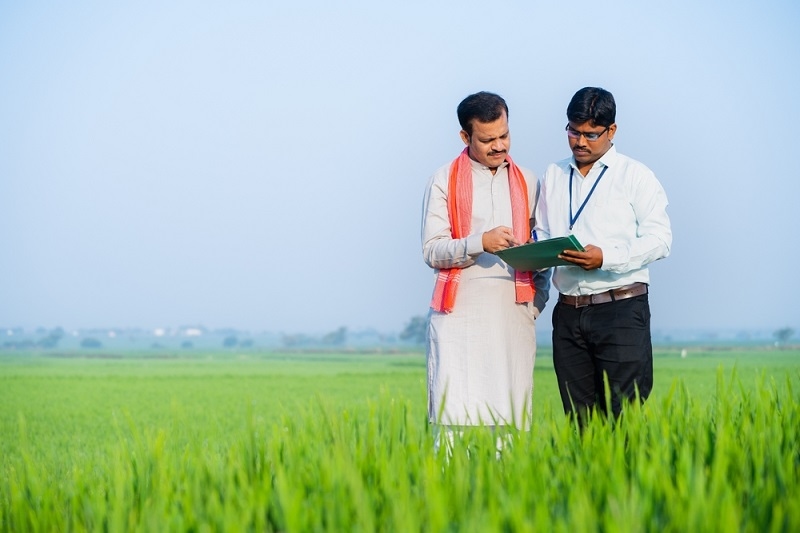
Farming isn’t easy. It never has been. One season everything looks promising, the next you’re praying the rain holds off or that pests don’t wipe out half the field. Add in rising costs for fuel, fertilizer, and equipment, and it’s no wonder farmers often feel like they’re one bad week away from losing everything.
That’s where insurance steps in. And not the old, one-size-fits-all kind. Farmers in 2025 and beyond need coverage that keeps up with reality — unpredictable weather, new diseases, volatile markets. This is where modern farmers agricultural insurance makes a difference. It’s not about drowning in paperwork or confusing jargon. It’s about building a safety net that lets farmers sleep at night knowing that if the worst happens, they’ll live to plant again.
Think about it: storms are stronger, droughts last longer, and prices at market swing wildly from year to year. Even the most skilled grower can’t control all of that. A farmer’s livelihood is always at risk. Without protection, one disaster can undo decades of hard work.
That’s why farm insurance is so critical today. It doesn’t make the risks disappear, but it cushions the blow when things go wrong. It’s the difference between rebuilding after a flood or fire and walking away from the land altogether.

So what does coverage actually look like? At its simplest, modern Farmer’s insurance usually focuses on three big areas: crops, animals, and the farm itself. The tricky part is that every operation looks different. A corn grower in Iowa won’t need the same policy as a dairy farmer in Wisconsin or a vineyard in California.
The new twist is how insurers are tailoring coverage with tech. They’re using satellite data, weather tracking, even drones to check crop health. That means more accurate policies, faster claims, and fewer “sorry, you’re not covered” surprises.
Crops are the bread and butter of farming. They also happen to be the most fragile. Too much rain? Ruined. Not enough rain? Same story. Add in pests, blight, or sudden frost, and a whole season can go down the drain.
That’s why crop insurance has become non-negotiable for most growers. It helps cover losses caused by weather, disease, or even sharp price drops in the market. Farmers don’t get rich from it — that’s not the point. It’s there to keep the lights on and the tractors running until the next planting season.
For livestock farmers, the risk looks different. A herd of cattle or a barn full of chickens represents years of investment. One outbreak of disease or a barn fire can erase that in hours.
That’s where livestock insurance comes in. It covers things like illness, accidents, and natural disasters. For bigger operations, it’s essential. But even small family farms benefit, because losing just a few animals can mean the difference between breaking even and going under.
At the end of the day, livestock coverage isn’t just about protecting animals. It’s about protecting the families who depend on them.
As Previously Covered: Protect Your Irrigation System from Vandalism & Damage
Here’s the part that feels new: insurance is finally catching up with technology. Farmers today aren’t stuck with slow, outdated policies. They’re getting access to modern agricultural insurance solutions that actually work in real time.
Some insurers are using apps where claims can be filed with a few clicks. Others are experimenting with parametric insurance — basically, if rainfall drops below a certain level, payouts happen automatically. No endless arguments about proof or damage reports. Just straight compensation based on agreed conditions.
For farmers juggling a thousand daily challenges, that speed and simplicity is a game changer.
Of course, insurance still has its frustrations. Premiums can feel high, and policies can be confusing to read. Some farmers avoid coverage altogether because they think it won’t pay out when needed. And in certain regions, options are limited, so growers feel stuck with plans that don’t fit their needs.
But here’s the truth: doing nothing is riskier. Sitting down with a trusted advisor, or even comparing policies once a year, can uncover better fits than most people expect. It’s not perfect, but it’s better than being one storm away from financial ruin.
Take a fruit grower who lost most of an orchard to a freak frost. The season’s income was basically gone overnight. Without coverage, that farmer might have had to sell land. With insurance, they got a payout that kept them afloat until the next harvest.
Or the dairy farm that faced a devastating barn fire. The loss of animals and equipment should have been the end. But their farm insurance stepped in to cover rebuilding costs and livestock replacement. The family is still farming today because of it.
Stories like these make the value of insurance real. It’s not a line in a policy booklet — it’s survival.
When looking at coverage, farmers should ask themselves a few hard questions:
What’s my biggest risk — weather, disease, or property damage?
Could I survive financially if I lost half a crop or half a herd?
How fast do I need a claim paid to keep things running?
Does my policy actually fit my operation, or is it just generic coverage?
Good coverage should answer those questions. If it doesn’t, it’s worth shopping around.
The future of modern farmers agricultural insurance looks a lot more connected and responsive than it used to. Expect policies that use better data, claims that move faster, and coverage that feels less like a hassle and more like a partnership.
As climate challenges continue, these innovations aren’t optional. They’re lifelines. Farmers don’t need perfection — they need fairness, speed, and enough financial support to get them through the next season.
Read More: Crisis Communication: Plans for Farm Crisis Communication
Farming will always be unpredictable. But unpredictable doesn’t have to mean unprotected. From crop insurance to livestock insurance, from traditional coverage to modern agricultural insurance solutions, today’s farmers finally have options that match the world they’re working in.
At its core, modern Farmer’s insurance isn’t about avoiding risk. It’s about giving farmers the confidence to keep planting, keep investing, and keep feeding the world, even when the skies look uncertain. Because in agriculture, the question isn’t if something will go wrong — it’s when. And when it does, insurance is the tool that helps farmers rise again.
This content was created by AI